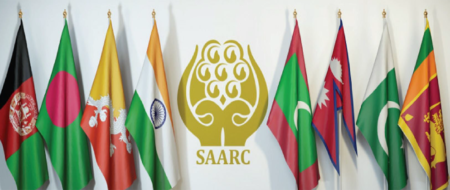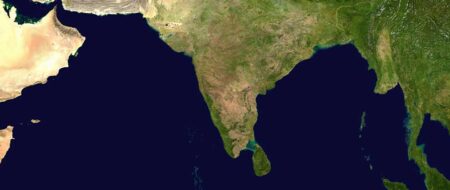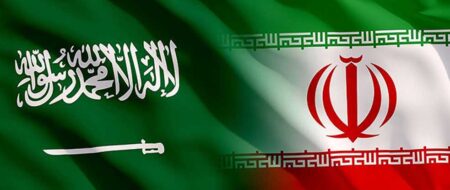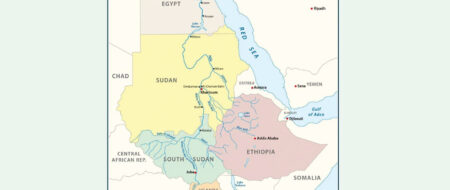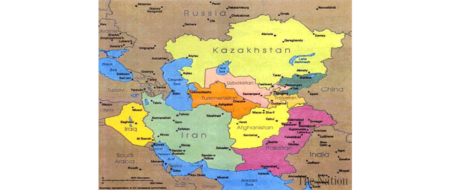Terrorism, Religion and World Peace
All the faiths of the world advocate benevolence. However, radical elements exploit religious teachings to sermonize hatred, violence and intolerance. Faith-related violence, at present, supersedes all other manifestations
Policy Perspectives, Vlm 3, No.2
Abstract
[All the faiths of the world advocate benevolence. However, radical elements exploit religious teachings to sermonize hatred, violence and intolerance. Faith-related violence, at present, supersedes all other manifestations. The term “religious terrorists” is often applied to Islamic groups. However, there are fanatic elements within every society including the US itself that should not be underestimated. Rather, the world has to be more vigilant towards them. The article, analyzing terrorists’ mindset from different slants, describes how religious terrorists think about their acts and objectives. Discussing how terrorist outfits are mobilized and formulated, the article lists challenges confronting the world in dealing with the phenomenon. – Editors]
All the world’s religions preach the virtues of mercy and compassion, advocate numerous values of non-violence and peace-building, respect and preserve human life, and call for peace. Tragically, however, most major religions can also justify violence since their canons contain martial metaphors, and have long been associated with terrorism. Whole books of the Hebrew Bible are devoted to the conquests of great kings. In Hinduism, warfare is the basis of great religious epics such as the Mahabharata. Warfare, however, is not just confined to mythic legends. It has spilt over into history, with conflicts such as the Crusades, the Muslim conquests and the religious wars of the sixteenth century.[1]
Historically, three of the most famous examples of warring religious groups are the Hindu thugs, the Jewish zealots, and the Islamic assassins. Because the conversion of “unbelievers” was an important motivator behind the Crusades, they are regarded by some as the first example of large-scale religiously motivated terrorist acts. In reality, within every religion, there have always existed radical elements exploiting the faith to preach hatred and violence, intolerance and exclusiveness. Religious terrorists seek to use violence to further their purportedly ‘divinely commanded’ purposes.
In modern times, historical moments of global transformation have provided an occasion for religion — with all its images and ideas — to be reasserted as a public force. Modern religious terrorism surfaced around 1980, a time when the ideologies were in decline. The 1980s and 1990s witnessed a failure of the secular gods, and a profound void was left for religion to fill. Modern religious terrorism very effectively married ideology to religion. In addition, during this period, many countries began to experience a great social transformation. Social and economic pressures frustrated political aspirations and, combining with bitter personal experiences, contributed to the rise of religious terrorism on the world arena. Religious violence provided a sense of empowerment to alienated individuals, marginalized groups, and visionary ideologues.
In addition, globalization creates a tremendous amount of confusion for human beings in terms of identity. In order to seek a clear identity, sometimes, some people can be drawn to religious extremist movements, including those who promote violence. In a religious terrorist group, an enjoyment of faith, a pleasure in belief, being in touch with God are clearly manifested, based on the idea that the self is at the center of religion. Hence the individual is at the core of identity.
Nowadays, religiously motivated terrorism has superseded other forms of terrorism and leads to more intense forms of violence and bloodshed. Religious terrorist groups include the Al Qaeda network, various American white supremacist militias (including the Christian Patriot movement), the Jewish Kach/Kahane Chai, the Sikh Dal Khals and Dashmesh, and Japan’s Aum Shinrikyo, among others.[2]
Currently, the term “religious terrorist” is most often applied to Islamic groups. In actual fact, however, white supremacists also pose a threat that cannot be underestimated. For instance, 760 hate groups exist in the USA with about 100,000 members. America needs to be more vigilant about the domestic white supremacists, neo-Nazis and militia members. In 2003, for example, a Texan in a militia, William Krar, was caught with 25 machine guns and other weapons, a quarter-million rounds of ammunition, 60 pipe bombs, and enough sodium cyanide to kill hundreds of people. Before September 11, America was too complacent about Al Qaeda and foreign terrorists; now, it is too unwary of homegrown threats.[3]
In Britain too, anti-Muslim attacks supported by the white supremacist British National Party have increased. They have served to strengthen hostility against Muslims as well as “Islamophobia” among the general public.
Idiosyncratic Characteristics of Religious Terrorism
Without a doubt, religious terrorism presents a grave challenge to national, regional and international security today, and needs to be understood to be addressed. In this regard, it is useful to be aware of the unique features that set religious terrorism apart from other forms of terrorism:
1) Religious terrorism has its own radically different value systems, mechanisms of legitimization and justification, concepts of morality, and worldviews, according to Dr. Bruce Hoffman. For the religious terrorist, violence is first and foremost a sacramental act or divine duty executed in response to some theological demand or imperative. Terrorism thus assumes a transcendental dimension, and its perpetrators are undeterred by political, moral, or practical constraints. They seek to appeal to no other constituency than themselves. They see themselves not as components of a system worth preserving but as ‘outsiders’ seeking fundamental changes in the existing order. This perception enables the religious terrorist to contemplate far more destructive types of terrorist operations than secular terrorists and reinforces the tendency that anybody is a fair target.[4]
The most extreme religious terrorists can sanction “almost limitless violence against anyone.” This distortion of the teachings of religions has been most brutal and fanatical where the blood of the faith community is made sacred “by the fanatical utterances of the religiously and racially intoxicated.” In the ethos of radical Islamic terrorism, for example, individuals believe in martyrdom or self-sacrifice in the service of Allah, and have no moral ‘red lines’ in terms of numbers of casualties and the extent of destruction they were willing to inflict. They carry out violence because the jihad must go on: “in a jihad, there are no red lines,” and the extent of damage and the number of casualties are of primary importance.
Cults headed by charismatic leaders, where the leaders dominate the followers spiritually and emotionally, are usually very dangerous.
2) The terror inflicted by the religious terrorist is not an end in itself, but a means towards a larger goal. Nor is this goal a conventional one. As the US National Commission on Terrorism put it: “Today’s terrorists don’t want a seat at the table, they want to destroy the table and everyone sitting at it.”
Terrorists of a religious nature or motivation see themselves as answerable only to God or their idea of God. Their ultimate constituency is God. However, the pure intention of desiring to serve God becomes contaminated by the needs of the ego that arise from despair and helplessness. So, religious terrorists can be quite devout in relation to wanting to serve God but quite violent in their behavior towards others. This mixture of darkness and light, of falseness and truth, of love and hatred, and of purity of devotion combined with extreme desecration of what purity is really about, can occur within individuals who are quite spiritually focused. It is present among many who advance the cause of terrorism in the name of God.
3) Religions mandate acts of terror as a sacred duty in an endless, cosmic struggle for the best way to please God. It is the religious worldview that the entire universe is locked in an eternal struggle. Religious terrorism has no military objective. A holy war, or jihad, is endless because it has a spiritual objective; no one ever knows when God is pleased enough, or when the situation in heaven matches the situation on earth. For this reason, religious terrorism is also most dedicated and unpredictable. Most religious terrorists are devout, fundamentalist, ‘true’ believers in their mainstream religion. The divine mandate for destruction is regarded as the ‘neglected duty’ within the mainstream religion. Religious terrorists also do not consider themselves terrorists, since they say they do not enjoy violence for the sake of violence. They regard themselves as religious activists or militants.
4) A mindset based on binary thinking exists in many religious terror groups. Religious terrorists among Muslims, Hindus, Jews, and Christians believe in a simplistic, Manichean division of people into two groups: “the righteous” and “the unrighteous.” In this dualistic world, all reality is divided into two camps: good gods and bad gods, angels and demons, good nations and evil nations, good humans and evil ones. Terrorist groups employ various forms of conceptual and emotional manipulation, such as oversimplification, deception, and mass suggestion, which routinely precede physical forms of terror.[5] With their extensive indoctrination infrastructure, through private and isolated gatherings among members, they build strength, laying the groundwork for decades of struggle.
Moreover, in today’s globalized world, religion no longer has a relationship with a territory or given society, which is what we call deterritorialization. It means that religion has to define itself solely in terms of religion. It has to define itself in comparison with all “others” – other religions, other values, other environments. [6]This further consolidates religious extremist binary thinking.
5) Religious terrorists tend to fight with determination and spirit.[7] They stick to their aims with persistence. Religious agendas can inspire deep emotional responses and therefore result in dedicated actions. Such agendas can create anger and a readiness to sacrifice the self in the fight against enemies, who are seen to have been transformed into devils. Religious terrorism is about belief. It needs very little in the way of financing to accomplish its individual missions. The religious zealots appear to be quite happy to sacrifice their own lives. [8]
6) Religious terrorism encourages extra-territorial loyalty, holding that loyalty to religious solidarity among followers overrides loyalty due to the nation-state of which the followers are citizens. Religious terrorism does not recognize national borders. There is no territory followers must protect. Such terrorism is thus subversive to the traditional concept of loyalty to the state.
7) A traditional network exists outside of law-enforcement services’ surveillance. It is an informal network of person-to-person relationship. The recruitment process is predominantly a casual or informal process. Members generally know their recruiter prior to recruitment. In many cases, it is a friend or acquaintance in the group who recruits a new member. For some, the recruiter is a family member, and for others, someone from the community they know casually. A small percent of members are introduced to recruiters through a third party.[9] In fact, little actual recruitment needs to be carried out, as most members volunteer. The network grows organically, rather like the Internet.
8) Religious terrorists have internalized their values. They are ‘true believers’ who subordinate their individuality to the group. They uncritically accept the direction of the destructive charismatic leader of the organization: to them, what he declares as moral is moral, and indeed a sacred obligation.[10]
9) Many religious terrorists have received higher education, such as graduate training at the technological universities of the West. Most come from financially comfortable middle class families. For instance, three-quarters of Al Qaeda members belong to the upper or middle class of their societies, and six-three percent have attended college; in many aspects, they are the best and brightest of their societies. Three-quarters of them are professionals or semi-professionals, including engineers, architects, and civil engineers, and mostly scientists. In their education, the natural sciences predominate. They are skilled in computer technology. They speak three to six languages. Most of us don’t know Arabic: these men know two or three Western languages, including German, French, and English.
10) Religious terrorism uses intimidation and ideological and physical terror as weapons to make its will prevail. For the terrorists, religion is a weapon of coercion and intimidation with which to subjugate the ‘infidels and the non-practicing persons.’ In March 1995, the Aum Shinrikyo attacked Tokyo’s subways with sarin, killing 12 and injuring more than 5,000 with the lethal gas. The incident was the world’s first mass-scale chemical terrorist attack. The group had built a vast arsenal of biochemical and conventional arms, including mustard gas, anthrax, botulism, Q-fever, sarin and TNT. It also experimented with seismic weapons designed to trigger cataclysmic earthquakes in Japan.
11) Religious terrorists never have to win a battle and can instead profit in the realm of public opinion through the glory that their martyrdom confers on them even in their defeat. We think the struggle is fought on the ground, but they know the struggle is really fought on satellite TV, and they are far more sophisticated than we are in using it.
12) Youth are the prime recruiting target of religious terror groups, because such vulnerable sincerity, fervor, hunger for action, and commitment enough to live or die for a cause is usually found only among young people. They are more readily swayed by indoctrination and propaganda. Youthfulness is an attribute that stands out among indoctrinated men and women, whether they are Muslim, Buddhist, Hindu, Catholic or Protestant, or belong to new religious groups such as the People’s Temple in the US and in Guyana.
13) Terrorism today is fueled by three broad forces: the openness of free societies; the easy access to technologies of violence; and a radical and global ideology of hatred. It can be stopped only by responses at each level.
Challenges for Countering Religious Terrorism
What the world is now confronting is asymmetric warfare. The key challenges entailed in this war are outlined below:
· Religious terrorism, in one form or another, has been around for centuries and will be around for many more. A challenge in countering religious terrorism is that the threat and the problems that fuel it can never be completely eradicated. The complexity, diversity, and often idiosyncratic characteristics of modern religious terrorism imply that there is no “magic bullet” — no single, superior solution — that can be applied to all cases. As mentioned above, religious terrorists have religious fervor, confidence, knowledge, discipline and expertise to embark on terrorist attacks. They have also learned to find the vulnerabilities in civil society. Hence, there is a need for multiple creative solutions, if not to resolve, then, at least, to ameliorate the underlying causes of religious terrorism as well as its violent manifestations.[11]
· In the past, ideological movements were fought to take control of states. Now the world is faced with a belief system that is inimical to the state system, and aims at the theological rule. This system will not be countered by the same means that worked against other forms of terrorism. Neither military nor political solutions seem to be effective. Ceasefires, political concessions, financial rewards, amnesties and other personal inducements would be futile. A new set of institutions will be needed to grapple with this reality, and new training methods developed to understand a people who are uninterested in national self-interest as traditionally defined. The fact should be faced that a long struggle lies ahead.[12]
· Roaming in nature, they are more globalized than the worldwide law enforcements. Members of terrorist groups come from every corner of the world, while states cannot realize this diversity. Actually, the jihadist movement, initially based locally, has become international in nature, in terms of both its members and the diversified objectives that it pursues. Religious terrorist groups, like other global movements, its diverse membership is not united by way of commonality about class, ethnicity or personal background. Indeed it functions as a network by disrupting and disregarding old-fashioned forms of political and territorial allegiance.[13] These globalized terrorist groups have realized their effective composition of manpower and resources worldwide, while the law enforcements cannot reach this level because of existing national interests, territorial borders, and barriers of law.
· Religious terrorist groups operate in “horizontal network” and in a traditional, non-technical world of family and tribe and decentralized, socially based authority, while the states work in “vertical system” and in a technical, centralized bureaucratic world. In this respect, the state has only limited ability to affect these social relationships as well as to understand or influence traditional communication.
· Winning the war is dependent on knowing the secrets of religious terror groups, and therefore espionage and information gathering are extremely important. So far, all we have been able to do, mainly, is to gauge what has happened in the past.[14] While governments are in the open, their terrorist foes are hidden. The foes have open access to information about governments, through sources such as the mass media, but their own activities cannot be watched so easily. Because of their unique behavior, close and religious nature, and reliance on individual relationships, terrorist groups are extremely difficult for law enforcement agencies to infiltrate; it is therefore hard to preempt their attacks. Usually, law enforcement agencies cannot identify culprits until the first attack has been perpetrated.[15] Thus, after investigating the Arm attack, a US Senate investigative report asked, “How does a fanatic intent on creating Armageddon, with relatively unlimited funds and a world-wide network of operatives, escape notice of Western intelligence and law-enforcement agencies outside of Japan?” The answer was alarming: “They simply were not on anybody’s radar screen.” The intense dedication of religious terrorists and their unpredictability create yet more difficulties for governments to counter their attacks.
· Religious terrorists are very hard to identify as individuals. Mostly, they melt into local society and may be quietly installed in any metropolitan city. Appearing normal, socially well-adjusted, and without any crime records, they easily escape the suspicions and surveillance of security services. Finding suspects is the top priority for law enforcement services, but the dilemma, as acknowledged by Canadian Deputy Prime Minister John Manley in an interview, is: “You can’t know what you don’t know. You can only hope you catch what you need to catch.” Pierre de Bousquet, the head of France’s counterintelligence service, says, “They do not seem suspicious. They work. They have kids. They have fixed addresses. They pay the rent.” According to Dr. Bruce Hoffman, “The members of these groups are not full-time, professional terrorists…but consider themselves minutemen: ordinary citizens and patriots ready to take up arms at a moment’s notice to defend their inalienable rights.”[16]
[1] Jay Gary, “Unmasking Religious Terrorism,” March 30, 2001http://www.presence .tv/cms/terrorism.shtml.
[2] CDI Primer: Terrorism Beyond Islam, March 19, 2004; Mark Juergensmeyer, “Terror in the Mind of God – The Global Rise of Religious Violence,” University of California, 2000.
[3] Nicholas D. Kristof, “Homegrown Osama bin Ladens,” International Herald Tribune, March 10, 2005.
[4] Bruce Hoffman, “Old Madness, New Methods: Revival of Religious Terrorism Begs for Broad U.S. Policy,” Rand Review, September 1998.
[5] Roderick Hindery, “The anatomy of propaganda within religious terrorism,” Humanist, March-April 2003.
[6] Olivier Roy, Globalised Islam: the Search for a New Ummah, Hurst &Company, London, 2004, p38.
[7] Dr. Alexander Roman, “Killing for God: Religious Terrorism in the World Today.”, http://www.unicorne.org/ORTHODOXY/automne2004/terrorism.htm.
[8] Peter R. Neumann, “Wider lessons from the IRA”, International Herald Tribune, August 3, 2005.
[9] Jerrold M Post, Ehud Sprinzak and Laurita M Denny, “The Terrorists in Their Own Words: Interviews with 35 Incarcerated Middle Eastern Terrorists,” Terrorism and Political Violence, A Frank Cass Journal, ISSN 0954-6553.
[10] Jerrold M Post, MD, “Killing in the Name of God – Osama bin Laden and Al Qaeda,” Counter-proliferation Papers, Future Warfare Series, No.18.
[11] Op. cit. (Bruce Hoffman, 1998)
[12] David Brooks, “The real enemy is not terror, it’s an ideology,” International Herald Tribune, July 27, 2004.
[13] Faisal Devji, Landscapes of the Jihad: Militancy, Morality, Modernity, C. Hurst & Company. (Publishers) Ltd., London, 2005, p25.
[14] Waleed Ziad, “The shallow roots of the mujahedeen,” International Herald Tribune, June 19-20, 2004
[15] Marc Sageman, “Organic terrorism,” The International Jerusalem Post, December 3, 2004.
[16] Bruce Hoffman, “Holy Terror: The Implications of Terrorism Motivated by A Religious Imperative,” Rand Paper, p7, 834, 1993.


